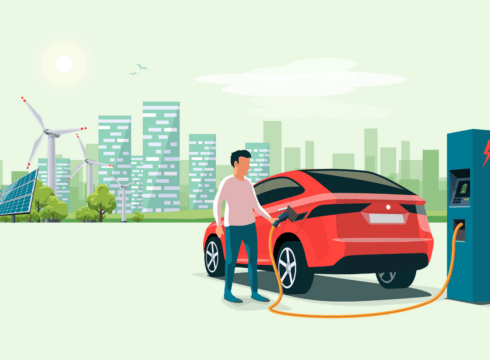The number of fintechs and NBFCs that provide financial services to consumers are less in number in the country as they are wary of the resale value as at present, there is no secondary market for EVs
Further, the rate of interest on EVs is generally charged 150-200 bps more than that of ICE vehicles
With government support and private contribution, the EV industry of India can become one of the biggest and highest churning markets globally
Inc42 Daily Brief
Stay Ahead With Daily News & Analysis on India’s Tech & Startup Economy
The world today is standing on the pedestal of transformation. With more awareness and willingness to take matters in our hands related to climate change, more and more sustainable practices are coming into play. The evolution in the automotive industry with the adoption of electric vehicles is one of them. With fewer emissions of greenhouse gases in the environment, the use of electric vehicles can reduce air pollution to a great extent, thus being recognized as a vehicle of choice by many.
With improvements in battery infrastructure and costs along with supportive policies and schemes by the government, EV sales around the world are surging today. In India itself, for April-November 2021 period, total registered EV sales stood at 1.98 lakh-plus units with month-on-month growth of 17 percent in the electric two-wheeler segment, according to the details provided by CEEW (Council on Energy, Environment and Water).
How Are EVs Shaping Up In India?
The year 2021 can be considered as the year of transformation for the EV industry. The pandemic had initially slowed down the demand for EV vehicles, yet the demand started picking up in the first 6 months. At present, the sales are estimated to have increased around 355% year on year basis which can be defined as an exceptional start to the new era of EV.
In India, the government’s support in the form of incentives and subsidies like FAME II and PLI (Production Linked Incentive) schemes to incentivize domestic production have indeed helped new start-ups to enter the market with innovative models and features like the Bounce Infinity which had introduced the first-ever scooter with a swappable battery. This government push along with the ever-increasing demand has motivated many more companies to bring in better infrastructure in the EV space.
For instance, after evaluation of the emerging trends in mobility and growth potential for the EV space, larger corporations like Reliance Jio with BP have tied up with Blusmart, an EV riding platform to set up EV charging stations in the country. Indian Oil Corporations have also made the news as they are to install 10000 plus charging stations.
Furthermore, EV manufacturers are heavily investing to catch up with the ongoing technological advancements and digitalization. Digitalisation would entirely change the software and hardware of electric vehicles making them more convenient with newly added features such as vehicle health monitoring, autonomous navigation control, battery management systems, and driver assistance programs. Besides that, the partnership between legacy brands and start-ups may also have a positive impact on the sale of EVs in the coming years.
Need For Financing The Budding Electric Vehicle Industry
While India is still in the transition phase to switch to using electric vehicles, several challenges are governing the industry. Some of the key barriers to EV adoption include high technology cost, infrastructure availability, low loan-to-value ratios and limited specialised financing options.
The number of fintechs and NBFCs that provide financial services to consumers are less in number in the country as they are wary of the resale value as at present, there is no secondary market for EVs. In terms of funding, it is generally around 80% with a rate of interest of 150-200 bps more than ICE vehicles.
Since the risk associated with these vehicles are high, the interest rate is also high. Another challenge is that the battery has to be changed after 2-4 years as regular use makes it less efficient with a need to replace it, unlike the ICE vehicles that need not change any significant component. This would remain an issue to be resolved by the new and existing players.
We have observed that one-third of EV vehicles are being sold out through financing and have the potential to grow cent percent with access to the right financing options. And this financial inclusion for customers can only be guaranteed if EV becomes more commercialised and gains access to the daily living of families and businesses.
Although the recent buzz around EV with the introduction of electric scooters by Ola, expansion of Ather to increase their production to meet the ever-growing demand, several fintechs and NBFCs have been becoming active seeing the potentiality of the EV industry to provide innovative financing models to consumers.
Summing Up!
India is nearing its goal of being self-reliant and the largest automobile market in the world. Demand for electric vehicles has been increasing rapidly plus consumers today also have a wide number of choices to choose from.
We must also note that the growth of the EV sector is a function of technology adoption, which means the more we open up to adopting the technology, the bigger the market will become, which in turn will open up more financing avenues. With government support and private contribution, the EV industry of India shall become one of the biggest and highest churning markets globally.
{{#name}}{{name}}{{/name}}{{^name}}-{{/name}}
{{#description}}{{description}}...{{/description}}{{^description}}-{{/description}}
Note: We at Inc42 take our ethics very seriously. More information about it can be found here.


